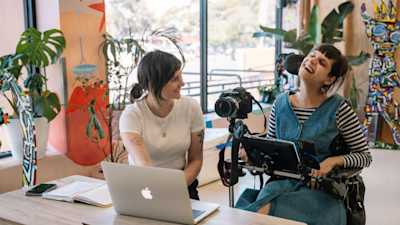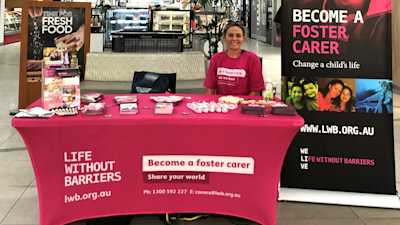Demystifying forced marriage statistics in Australia. There’s no such thing as a 'typical' forced marriage experience.

Image: A woman wearing a beige knit and white t-shirt is covering her face with her hands.
Statistics on the prevalence of forced marriage globally, let alone in Australia, are difficult to come by. Today, we explore the data from the first four months of the Forced Marriage Specialist Support Program, which Life Without Barriers is running, and why it matters.
Since the January launch, the program has supported people aged 15 to well into their 50s, from 20 different countries of birth, with Australia being the most common. As for visa status, more than 40% of the people who’ve received support are Australian citizens.
That’s right. The majority of people needing support on this issue have been part of the Australian community for a very long time.
They’re our neighbours, our colleagues, our schoolmates and our friends.
Gender is another area that challenges expectations. Four of every five referrals the program has received are women, and one in every five is a man. While that might be surprising to some, it’s certainly not to the program's Operations Manager, Sophie Cavanah.

Image: A man stands with his arm crossed in a white room, the photo captures his side profile, he looks unhappy.
"We’ve long known that forced marriage can affect people of any gender, and that men and non-binary people experiencing this issue are often left out of the conversation and underrepresented in the limited available data," Sophie said.
"This early data now clearly demonstrates just how broadly this issue impacts across the Australian community."
Whilst men are forced into marriage, women and girls are four times more likely to be.
Zooming out to look at where the greatest need for support has occurred so far, the majority of people supported by the program have been in Victoria and New South Wales – a fact which isn’t all that surprising given population distribution. But perhaps more concerning is that the program has already provided support in every state and territory across the nation, bar Tasmania.
Taking an even deeper look into the trends emerging from the program so far, three key pieces of information stand out.
The first is a structural one. One of the most important changes that made this program possible is that forced marriage support is no longer tied to participation in the criminal justice system. For years access to help often depended on someone’s willingness to engage with the Australian Federal Police (AFP), a huge and impossible barrier for many to grapple with, especially when family relationships were involved.
Early data from the program strongly reinforces why this change needed to happen, with only 5% of people accessing support having chosen to involve the AFP. That means a large percentage of people would not have been able to get support from a program such as this.
The second is that despite relatively conservative promotion of the program’s availability, 21% of people supported have referred themselves. That’s one in five individuals finding the program on their own, which speaks volumes about how urgently this kind of support is needed.

Image: Five women sit in a circle. They are outside on the grass, there is a lake and trees behind them.
Lastly, and perhaps slightly more hopeful, is that six out of ten people supported through the program have been deemed at risk of forced marriage, as opposed to the marriage having already occurred. This means that the program and its wrap-around support is serving as a form of early intervention, and empowering people take decisive, preventative action in their own lives.
So, while these statistics are preliminary and should be taken as such, they present a data-driven view into a relatively hidden breach of human rights here in Australia.
Beyond that though, it is important to challenge assumptions and create space for more informed, inclusive conversations about forced marriage, its impact on people’s lives and the support available.
"Just as forced marriage doesn’t look the same in every situation, dedicated support shouldn’t either," Sophie shared.
One of the clearest insights to emerge since the Forced Marriage Specialist Support Program launched is that when people think of forced marriage, they often assume it only happens to people from specific countries or cultures, or that it only affects young women, and we know that is just not the case.
If there is one point you take away from this, remember that there is no one group of people this affects.
Forced marriage is a crime and should always be reported.
If you’re concerned that a friend or family member is being forced to marry, or you’re a supporting agency, you can safely refer them for dedicated and discreet support. Get support from Life Without Barriers by calling 1800 403 213.
If you or someone you know is experiencing, or at risk of experiencing, domestic, family, or sexual violence, call 1800 737 732, text 0458 737 732 or visit the 1800RESPECT website for online chat and video call services. Life Without Barriers is funded by the Department of Social Services to provide the Forced Marriage Specialist Support Program. Further information is available on the Department of Social Services website.


